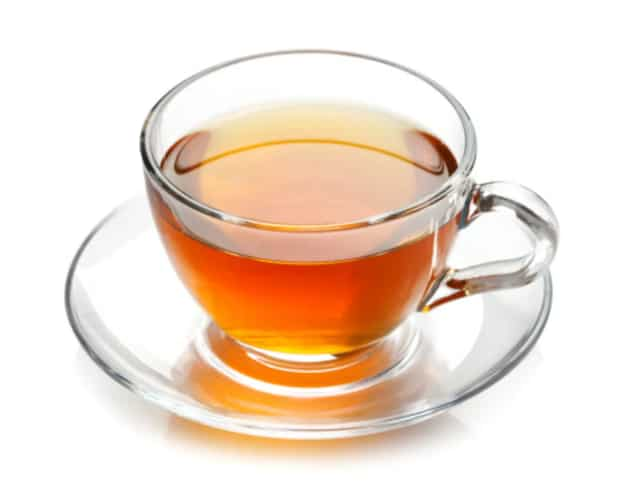The Nilgiri mountains are part of the Western Ghat mountain range that runs throughout South India, and this is where the Nilgiri teas are also grown. They're famous for being fragrant and medium-bodied, with a smooth, mellow flavour and a subtle, natural sweetness (almost fruity). Nilgiri tea is also used to make some of the most delicious iced teas you'd have. They never become bitter, don't cloud, and retain their inherent sweetness.
The History of Nilgiri Tea
The earliest tea plantations arose in Upper Assam and West Bengal, in Northeast India, and the credit for this goes to the daring British who were the first to introduce tea to India. Their main goal was to end China's supremacy in the world tea trade and to reduce Britain's trade balance with the Chinese, who required payment in silver. Because Britain was such a large user of tea at the time, it put pressure on the country's silver reserves. Tea was introduced to Nilgiri in 1835, and it has grown commercially there since the 1850s. As a result, many of the existing tea estates and architecture have an old British colonial feel to them.
The discovery of the Nilgiris hills and other regions with weather similar to that of the United Kingdom turned out to be a blessing in disguise. The first British official to stand atop the hills was John Sullivan, the Collector of the Coimbatore district. Previously, European missionaries came to this location. According to ICS' archives, Dr Christie, an Assistant Surgeon from Madras, is credited with introducing tea plants to the Nilgiris highlands. While on special duty in the Nilgiris in 1833, Dr Christie was undertaking a meteorological and geological study near Coonoor when he observed camellia shrubs that looked similar to tea trees flourishing in Assam and other areas. He decided to conduct some experiments using tea plants imported from China. However, his untimely death prompted other British planters to attempt the tea plant on the highlands.
The Role of Chinese
Thaishola (meaning mother of the forests) Estate was established in 1859 when the British monarch took over the government of India. In the Nilgiris, it was one of two camps for Chinese prisoners of war. Soon after the Second Opium War, the British sent Chinese prisoners of war to Nilgiris in order to plant tea on a massive scale (1856-1860). Singapore, Malacca, Dinding, and Penang were among the Chinese settlements in the Straits Settlements. They came here to work on a tea plantation and to help relieve prison overcrowding in Madras. Thaishola Estate, which still includes a Jail Thottam (literally jail garden), was planted with Chinese inmates, and the Chinese played no less a role in the creation and development of tea in India. More Chinese tea planters came to Nilgiris when the Chinese tea plantations produced the anticipated results. However, the plantation owners later resorted to tea experts in South India, who learnt the intricacies of tea-growing through trial and error. They learned the ins and outs of working on a tea estate over time.
Nilgiri Tea Today
By the end of the nineteenth century, about 3000 acres of land had been planted with tea. Soon after, at the Ooty Agricultural Show, Commissioner of Nilgiris James Wilkinson Breeks pushed numerous tea planters to exhibit their tea in London, the world's major centre for tea, opium, and spice trade. Planters turned to Indian natives to bypass middlemen in London who would take a part of the profit, encouraged by their positive opinion of Nilgiri tea. However, it took a long time for Indians to begin drinking tea on a regular basis. Over time, the number of domestic consumers grew, as did the growth of tea farms to accommodate new territories. The Nilgiris Hills produce about 70000 to 120000 tonnes of tea per year, making it India's second-largest tea-growing region.
 Nilgiri tea does not cloud but instead produces clear and brisk tea liquors. The Nilgiri tea is said to be a South Indian treasure that has yet to be discovered. In Assam and Darjeeling, tea is grown seasonally, however in the Nilgiris, tea is grown all year. Nilgiris tea is known as Fragrant Tea because it is mostly grown at high elevations, resulting in outstanding scent and flavour. Because it is generally planted alongside other trees like eucalyptus, blue gum, and cypress, Nilgiri tea has flavours of mint, lemon, and eucalyptus.
Nilgiri tea does not cloud but instead produces clear and brisk tea liquors. The Nilgiri tea is said to be a South Indian treasure that has yet to be discovered. In Assam and Darjeeling, tea is grown seasonally, however in the Nilgiris, tea is grown all year. Nilgiris tea is known as Fragrant Tea because it is mostly grown at high elevations, resulting in outstanding scent and flavour. Because it is generally planted alongside other trees like eucalyptus, blue gum, and cypress, Nilgiri tea has flavours of mint, lemon, and eucalyptus.


